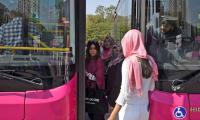In the first part of this article, I mentioned the various policies that the Ministry of Science and Technology drafted under my supervision. This article will highlight other such initiatives that my team and I have taken to place Pakistan on the road to progress.
With regard to planning and development, the ministry has greatly enhanced its capacity to efficiently consume the allocated funds. The MoST was able to utilise 78 percent of the development budget releases against 32 projects in the first half of FY 2020-21, which is a significant increase from the 18 percent utilisation in the same period of the last financial year.
These figures do not imply that funds are being exhausted needlessly, as it is being ensured that all new Public Sector Development Programme (PSDP) projects are purpose-driven. The existing ones are also being revised accordingly.
The Competitive Research Programme (CRP) is an umbrella PSDP project for the funding of research projects of national issues with a specific target of socio-economic gains. The key objective of the project is to resolve industrial issues, substitute imports and enhance exports through indigenous research and value addition. Similarly, through the National Technology Innovation Fund (NTIF), students and research scholars will get exposure to industrial settings for the development of the desired skill-sets to help develop high-quality innovative products.
The ministry has also revised the Science Talent Farming Scheme (STFS) for young students for another three years, increasing the number of students from 300 to 500 in each batch. A disability quota and a minority quota have also been added to the total number of scholarships. Besides, the ratio of scholarships has been set as 50 percent for females and 50 percent for males. The amount of the scholarship per student has also been increased from Rs10,000 to Rs 15,000.
We have launched the Science, Technology, Engineering and Mathematics (STEM) education programme in 50 secondary schools and cadet colleges across the country. Two hundred science teachers from these 50 STEM schools will be trained for STEM education. This programme will benefit a total of 10,000 students from 50 STEM schools each year. The Pakistan Museum of Natural History (PMNH) is also being revamped. The proposed project will bring the PMNH at par with top-notch museums in the region by adding more space for museum visitors by building five display centres and one operational block. State-of-the-art halls and galleries in the new display centres will promote research and informal education in the country.
The PSDP budget allocation of the PCSIR, the country’s largest state-run science and technology R&D organisation, was increased by 600 percent from Rs0.389 billion to Rs2.39 billion. The main thrust of the funding portfolio is tailored to the implementation of several strategic initiatives, having a direct role in import substitution as well as value addition for exports. By using the platform of industrial biotechnology, we are working on import substitution for vitamins, enzymes, active pharmaceutical ingredients (API) for antibiotics, heart-related and cancer drugs, etc, which will be now be manufactured in the country, saving billions of dollars in foreign exchange.
Unfortunately, the country imports Rs15 billion worth of ginger each year. The PCSIR has successfully demonstrated the growing cycle of ginger using hydroponic technology and a digital control system for the automation of processes. We have also established a Rs1.5 billion research and innovation fund for early-stage startups and individuals including small and mid-size enterprises (SMEs) to work in collaboration with the PCSIR.
The ministry has also started a civil-military R&D spillover programme and funded a joint Rs2 billion research project to indigenise technologies through the tailoring or transfer of technology. I have also tasked the PCSIR to consolidate its 3000 different analytical services with an online portal system for streamlining service delivery to end users in chemicals, leather, fertiliser, construction material, glass, oil and gas, food, energy, electricity equipment and calibrations services. Also, digital reforms are being introduced in both the MoST and the PCSIR to align with the Fourth Industrial Revolution.
I oversaw the institutional reforms at the PCSIR, and as a result, 635 employees have so far been promoted; at present, for the first time in 25 years, all top leadership positions are functioning to full strength. To ensure transparency in future elections in the country, a prototype of an electronic voting machine (EVM) was developed by the MoST as per the requirements and specifications shared by the Election Commission of Pakistan (ECP).
The prototype was shown to the president, the prime minister, ECP officials and members of other prominent platforms. The mass procurement of these machines is likely to commence soon. To hold various ministries accountable for their performance on an annual basis, the PM Office has instituted a system of auditing the bureaucracy. After every three months, a high-level peer review committee at the PM Office conducts progress review meetings of all the ministries and check their performance on mutually agreed-upon targets.
A system to measure performance in this respect has been developed. Previously, the Ministry of Science and Technology’s score measured below average (around 42 percent). With renewed efforts over the past few months, the score has improved to above 70 percent so far and will increase further in the remaining quarters of the current financial year.
I have made an attempt here to briefly go over what my team and I have been able to accomplish during the last few months. There is a lot more to come.
Concluded
The writer is the federal minister for science and technology.
A view of the Supreme Court of Pakistan. — Supreme Court website/FileWhat kind of firewall does the judiciary...
Indian soldiers stand alongside a barbed wire on the Line of Control. — AFP/FileAnti-Pakistan propaganda remains a...
A representational image showing farmers harvesting wheat crops in a field. — AFP/FileThere is a clear, lasting, and...
Pakistan's first president Major General Iskander Mirza while speaking with the Turkish Prime Minister Adnan...
Prime Minister Shehbaz Sharif pictured alongside President Asif Ali Zardari. — INP/FileBeing a man of action in...
A worker fixes a flag of the ruling Bharatiya Janata Party on a hoarding of their leader and India’s Prime Minister...







